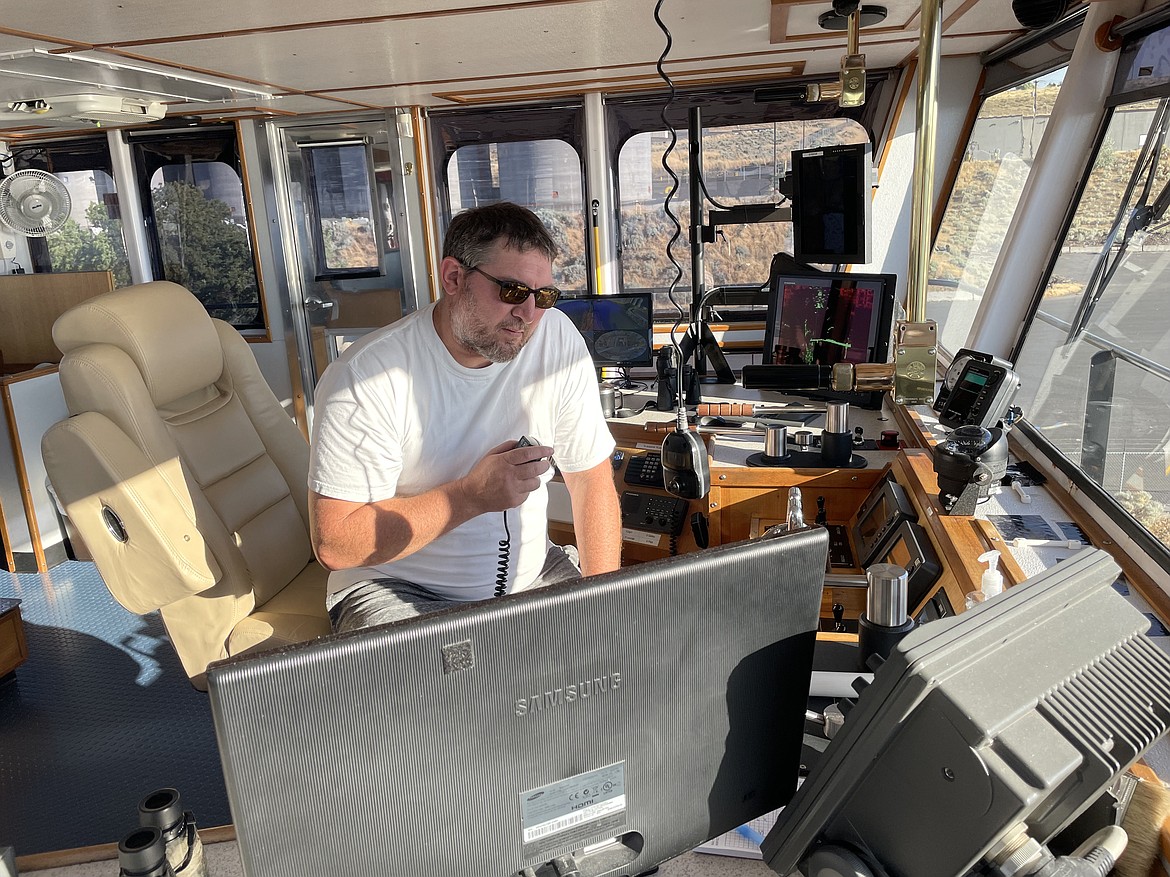
Shaver Transportation senior captain and tugboat pilot Troy Moore in the wheelhouse of the tugboat Lincoln during a voyage down the Snake and Columbia rivers in early August. With 22 years of experience as both a deckhand and a captain, Moore knows his way around the rivers. “This is a nice tow. It’s little,” Moore said of the four barges carrying roughly 13,000 metric tons of wheat he was pushing down the river to Portland.
August 31, 2022
Stories this photo appears in:

Ships and piers
Following wheat's journey down the Snake and Columbia rivers
PORTLAND, Ore. — In 1976, Herschel Slavens, then nearly 80, sat down to write about his life, including the time he found himself nearly penniless and looking for work in the early 1920s. “We didn’t have hardly any money so we stopped in Kennewick, Washington, and I got a job working for my cousin … who had a trucking company hauling wheat from a field to a warehouse on the Columbia River,” Slavens wrote in an unpublished memoir he shared with members of his family. With the collapse of farm commodity prices following the end of World War I, it was a tough time to be a farmer, and Slavens — who served in Hawaii, not France, during the war — noted official estimates that as many as half the farmers in the United States went broke from between 1920 and 1922. Still, he was able to find farmwork, moving sacks of wheat in the Tri-Cities before moving on and eventually settling in Montana. “It was put on barges and hauled to Portland,” he wrote. “The combine was pulled by about 30 horses and the wheat was put in 120-pound bags and dropped on the ground for me to pick up.” ...


